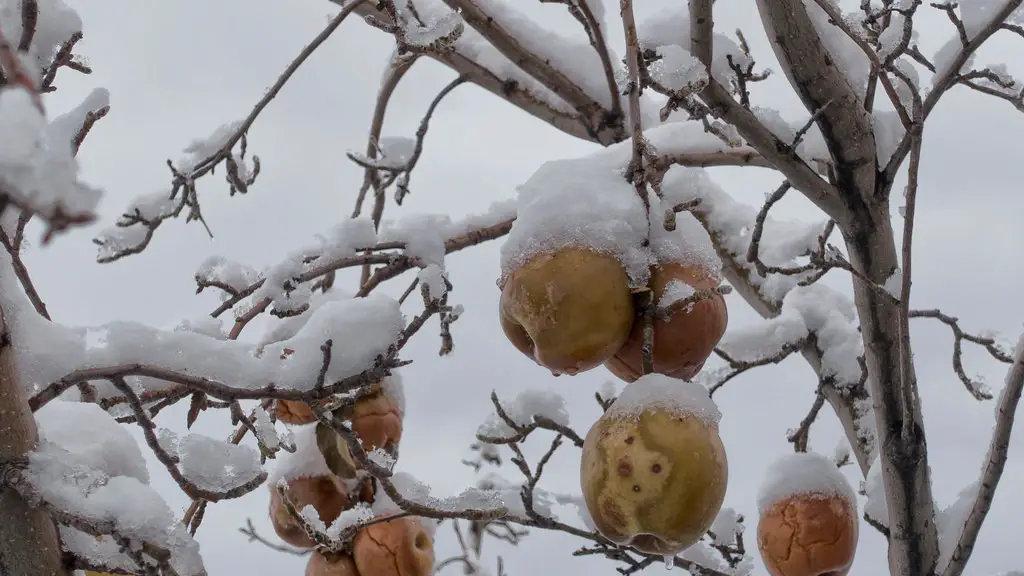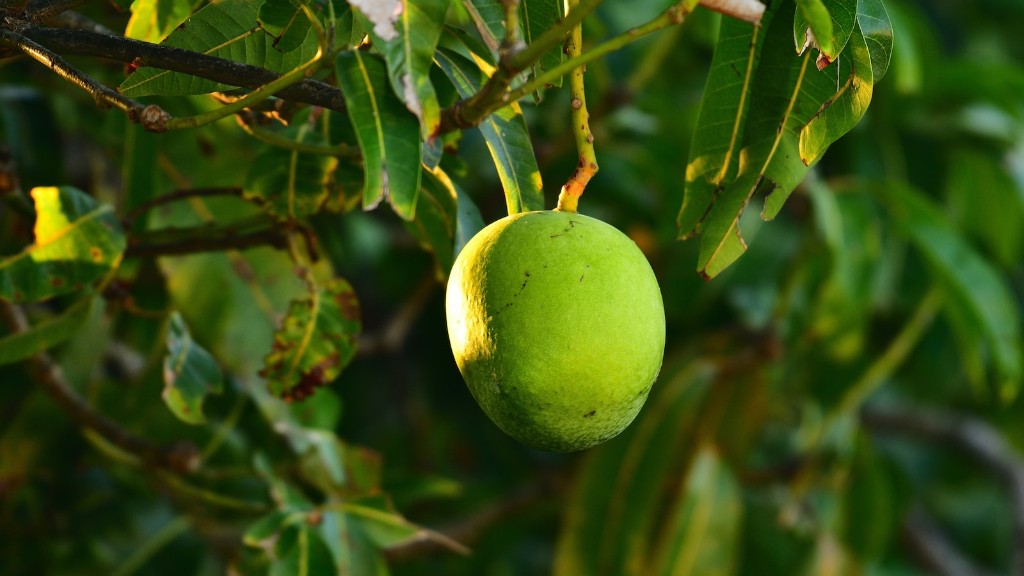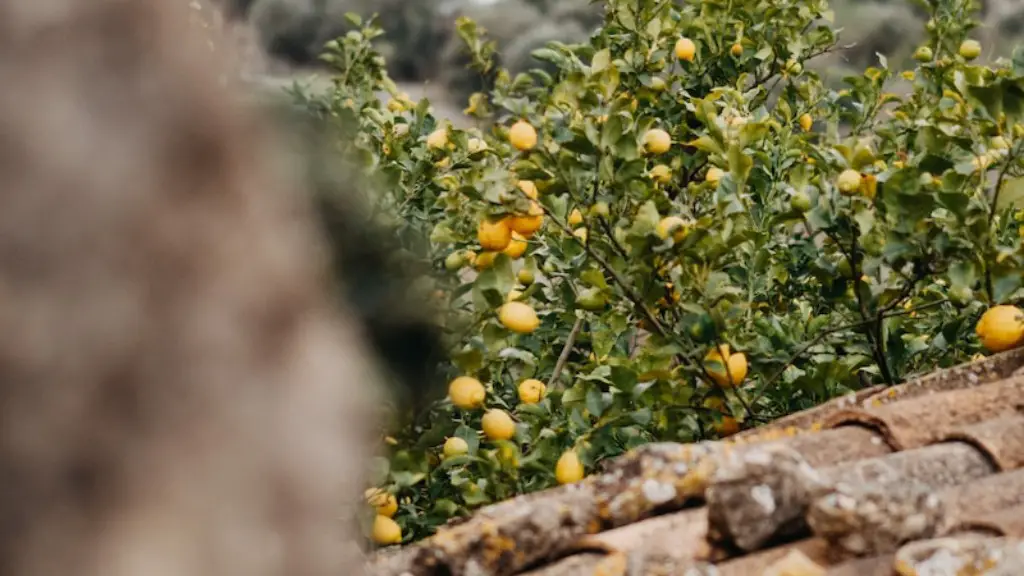Planting a dwarf apple tree in a pot is an easy and rewarding project. It’s possible to grow fruitful and striking trees even in small spaces, adding beauty, shade and delicious fruit. Here’s how to get started.
First, buy or gather a pot or a large planter. The wider the pot, the better. Plastic, galvanized, or terra-cotta pots are often used, though there are many attractive options. Pick one with a hole in the bottom for proper drainage, and remember the bigger the pot, the better it will hold moisture. If drainage isn’t a concern, you can always fill the bottom of the pot with packing pebbles or cobbled stones.
Following this, you’ll need to create a good potting soil mix. You can buy a pre-made potting soil, or create your own using equal parts topsoil, compost, and garden sand or perlite. The pH of the soil should ideally be around 6.0. Mix the soil with a good fertilizer, and while you’re at it, consider adding a bit of mycorrhizae— friendly fungi that helps trees absorb water and nutrients.
Now you’re ready to plant your dwarf apple tree. Start by digging a large, circular hole in the middle of the pot, as this will make it easier to get your tree in the right spot. Place your tree in the hole, make sure it’s level, and then fill in the area around it with the soil mixture. Gently tap the soil around the trunk to get rid of air pockets and water it in.
After that, prune your new tree consistently. Make sure to follow pruning instructions for a dwarf tree, as heavy pruning is not recommended. Pruning helps stimulate new growth and provides room for the new large apples. Dwarf apple trees produce many fruits and if left unpruned, can become overcrowded.
Finally, don’t forget to give your new tree ample water and sunlight. During the growing season, make sure to water your tree regularly (for instance, every other day). It’s also wise to fertilize your tree twice a year. Enjoy your new dwarf apple tree!
Potted Trees and Carbon Footprint
One of the main benefits of growing a potted dwarf apple tree is its reduced “carbon footprint”. In particular, the shorter life span of a dwarf apple tree compared to a standard one leads to less carbon dioxide and waste over its lifetime. Additionally, many of the materials associated with growing a potted tree, from the soil to the fertilizer, and the pot itself, can be reused year after year. This makes for a more sustainable project for homeowners and orchardists alike.
However, it’s important to consider any potential environmental side effects when selecting a pot for your apple tree. Ceramic pots, for example, require more energy and resources to produce, and may not be appropriate for some climates. Plastic can have its own environmental repercussions, so it’s wise to opt for a biodegradable pot to ensure the least amount of harm.
To further reduce the carbon footprint of the project, use organic potting soil and fertilizer. The latter contains beneficial microbes, humic acids, and trace minerals, so it’s important to find the right kind for the right tree. Also, using mulch around the tree and watering it with a watering can rather than a spigot can help to conserve water.
In short, potted dwarf apple trees are one way to bring the joy of growing fresh apples in limited areas and reduce the project’s environmental impact.
Health Benefits of Dwarf Apple Trees
Dwarf apple trees produce small apples with a surprisingly large nutritional punch. Studies suggest that apples, in general, are very high in antioxidants, dietary fiber and vitamins, and provide protective benefits against not only obesity but also chronic disease. These benefits can be enjoyed in a number of ways.
For instance, the apples produced by a dwarf apple tree can be eaten fresh or added to various recipes. From pies and cakes to salads and smoothies, the possibilities are endless. A single tree can produce hundreds of apples, so consider preserving some for later. Apples can be frozen, canned, or dried for long-term storage.
Another option is to make your own apple cider vinegar, which can be used for both culinary and medicinal purposes. To do this, you will need a special type of vinegar mother, which is like the starter for beer and wine. Apples from a dwarf tree make great cider vinegar – the vinegar preserves most of the nutrients from the apples.
In conclusion, dwarf apple trees can provide healthy fruit for many years to come, and are a great way to add beauty and flavor to any space.
Harvesting Dwarf Apples
Harvesting fruit from a dwarf apple tree is easier than it sounds. The more diligently you prune during the growing season, the less work you’ll have to do during harvest.
Unlike most apple trees, the dwarf apple produce several apples on one branch. So when it’s time to harvest, pick one branch at a time. Don’t pull the branch, as this can damage the tree. Instead, carefully twist the apples off the branch. Start with the mature apples first, as these will be the sweetest.
Once the apples are off the branch, inspect them for insect damage and mildew. If the apples aren’t showing signs of disease or insect damage, you can move them inside for storage. If the apples are slightly under-ripe, they can be left out on the tree for a few days to ripen fully.
It’s also important to note that some apples may drop off the tree before they’re completely ripe. This is not a problem, as these apples can be used for baking or in other recipes as desired.
When it comes to harvesting a dwarf apple tree, there’s plenty of room for experimentation. Collecting only a few branches of apples could have you enjoying a fresh apple any time of year.
Pest and Disease Prevention
As with any fruit tree, a potted dwarf apple tree is vulnerable to pests and diseases. To tackle these issues, proper cultural measures are necessary. Providing adequate drainage and sun helps keep pests and disease at bay.
In addition, it’s important to keep the tree in a healthy position. If the tree is positioned off the ground, there will be fewer air pockets and more air circulation, providing the tree with more protection.
It’s also smart to keep the environment around the tree as clean as possible. This includes removing dead branches, leaves and fruit, and making sure no weeds are growing near the tree. If you notice any diseased fruit, remove it quickly to prevent any other produce from becoming infected.
Finally, it’s a good idea to use compost and mulch around the tree. This helps keep the soil healthy and discourages weeds from sprouting up. Furthermore, compost helps maintain the tree’s moisture levels and reduces the need for supplemental water.
Conclusion
By taking the proper precautions and following the instructions outlined above, you can have a flourishing, beautiful dwarf apple tree in no time. Whether you plan to enjoy the apples yourself or share them with friends and family, growing a dwarf apple tree in a pot is a rewarding experience. Enjoy the fruits of your labor!




